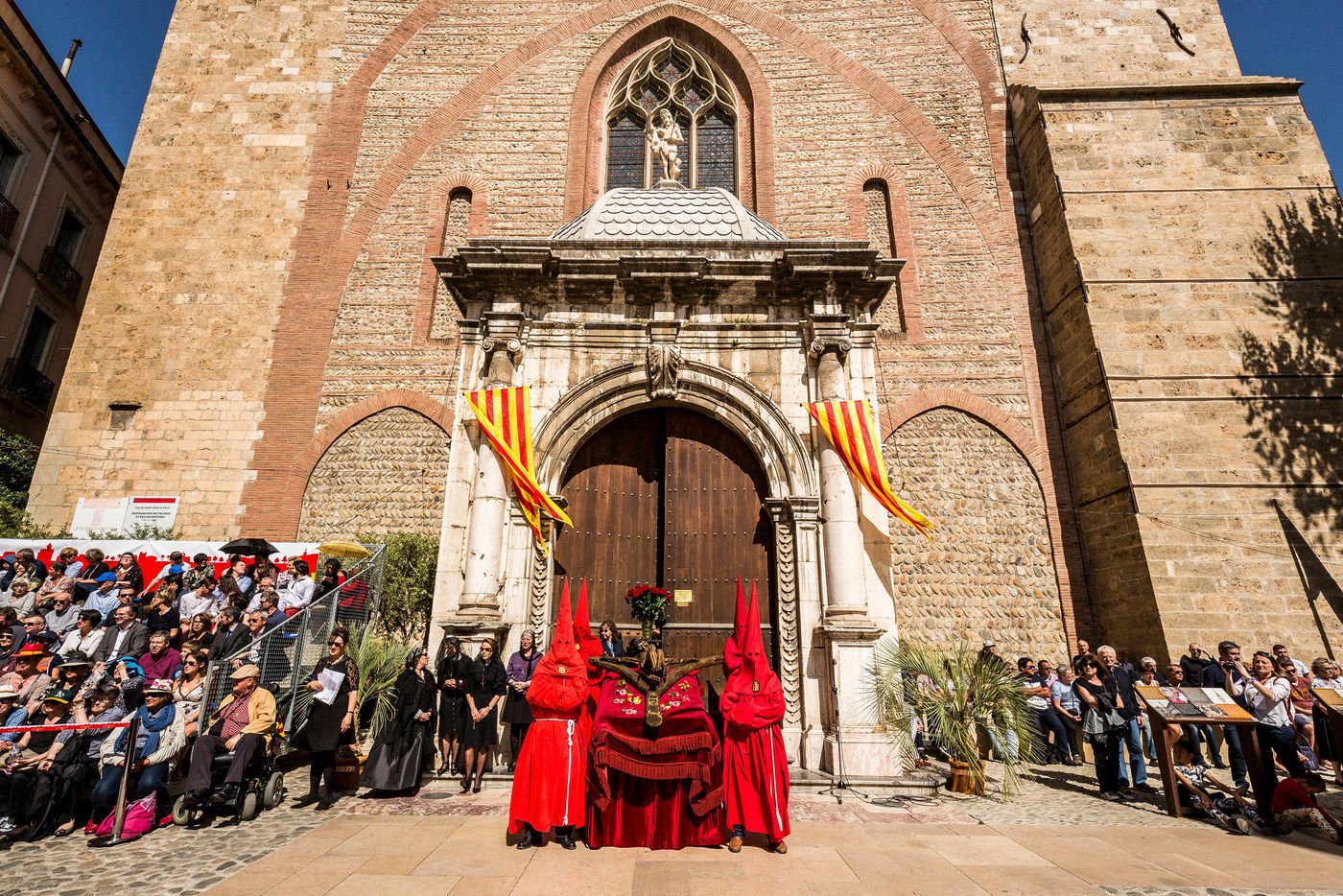Pour accéder à la série en entier, vous devez vous logger ou demander un compte Hans Lucas en cliquant ici.
Procession de la Sanch
Caparutxas, misteris, pénitents... Chaque année depuis 1416, pour le vendredi saint, les membres de l'Archiconfrérie de la Sanch (sang en catalan) se réunissent à l'église Saint Jacques de Perpignan pour perpétuer leur procession. Menés au rythme des tambours, par le « régidor » vêtu de rouge, les pénitents parcourent le coeur de la ville en transportant des mistéris symbolisant les différentes scènes de la Passion du Christ.
Si hommes et femmes ne se mélangent pas lors de la cérémonie et le long du cortège, chaque condition sociale est représentée au coeur de l'archiconfrérie dans une hiérarchie liée à l'expérience et la cooptation.
Durant les trois heures de marche que représente l'ancien « tour des remparts » de la vieille ville, chaque confrérie achemine son propre mistéri, pouvant peser plus de 80kg, à l'aide de 4 à 8 porteurs qui se relaient tout au long du trajet.
Cette cérémonie moyenâgeuse attire chaque année plus de spectateurs et de touristes, mais reste, pour ses acteurs, au delà de la célébration religieuse, une source de lien social et constitue aussi une importante part de leur culture et de la culture catalane, un acte quasi-identitaire.
Procession of the Sanch
Caparutxas, misteris, penitents... Every year since 1416, for Good Friday, the members of the Archconfraternity of the Sanch (blood in Catalan) meet in the church of Saint James of Perpignan to perpetuate their procession. Led to the rhythm of the drums, by the "regidor" dressed in red, the penitents walk through the heart of the city carrying mistéris symbolizing the different scenes of the Passion of Christ.
If men and women do not mix during the ceremony and along the procession, each social condition is represented at the heart of the archconfraternity in a hierarchy linked to experience and cooptation.
During the three-hour walk that the old "tower of the ramparts" of the old city represents, each brotherhood carries its own misery, which can weigh more than 80kg, with the help of 4 to 8 porters who take turns along the way.
This medieval ceremony attracts each year more spectators and tourists, but remains, for its actors, beyond the religious celebration, a source of social link and also constitutes an important part of their culture and of Catalan culture, a quasi-identity act.









